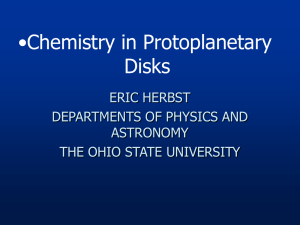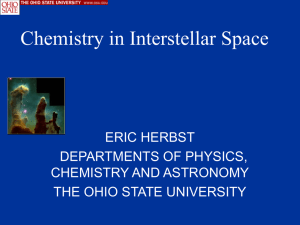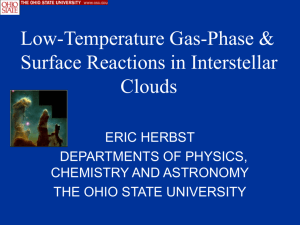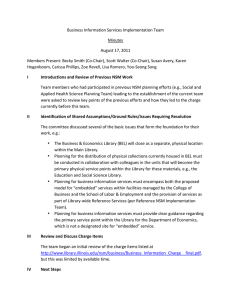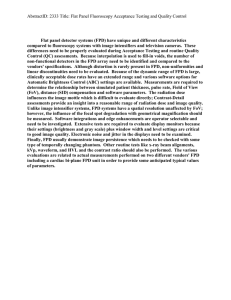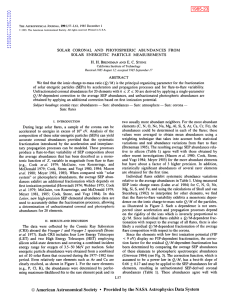ASTROPHYSICAL MODELLING AND SIMULATION Eric Herbst
advertisement
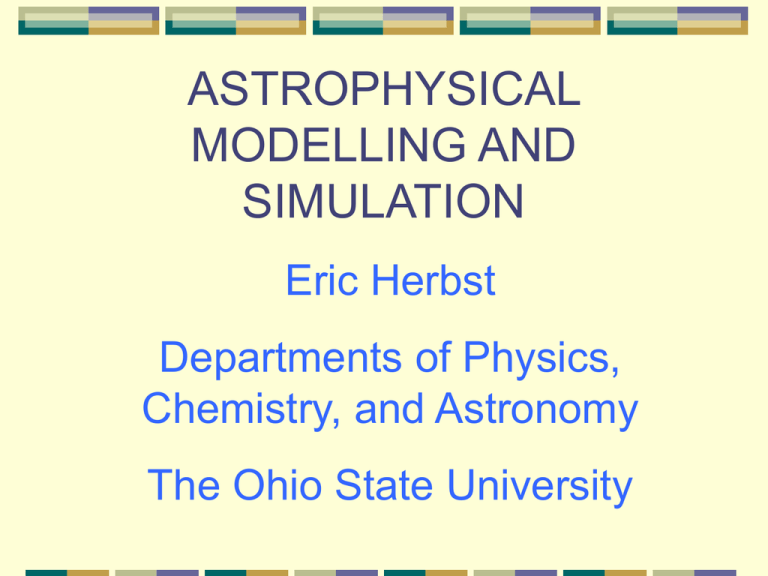
ASTROPHYSICAL MODELLING AND SIMULATION Eric Herbst Departments of Physics, Chemistry, and Astronomy The Ohio State University dense (giant) molecular clouds organic molecules Hot core core 4 -3 n = 10 cm T = 10 K H 2 PDR’s embedded stars hot ionized gas HII region protoplanetary disk studied in millimeter-wave and IR GAS PHASE INTERSTELLAR/CIRCUMSTELLAR MOLECULES - HIGH RESOLUTION (9/02) _____________________________________________________________________________________________ H2 KCl HNC C3S C5 C6H HC4CN HCO NH3 CH3 H3O+ CH AlCl CH4 CH3OH AlF HCO+ H2CO SiH4 CH3SH NH PN HOC+ H2CS CH2NH C2H4 OH SiN HN2+ HCCH H2C3(lin) CH3CN C2 SiO HNO HCNH+ c-C3H2 CH3NC C7H, C6H2 C8H HCOOCH3 CH3COOH CH3C2CN H2C6(lin) C6H2 H2COHCHO C2H5OH (CH3)2O CH+ CN SiS HCS+ H2CN CH2CN HC2CHO C2H5CN CO CO+ SO+ C3 C2O CO2 C2S C3H(lin) c-C3H NH2CN CH3C4H CH2CO NH2CHO HC3NH+ HCCN HCOOH C4H2 H2C4(lin) HNCO SiC3 HOCO+ C4H HNCS C2CN C3O NaCN HCCNC HNCCC C4Si H2COH+ CSi + CP H3 CS HF NO CH2 NH2 SiC2 SiCN SO2 NS SO HCl NaCl H2O H2S C2H HCN OCS MgNC MgCN N2O HC2CN C5H C5N CH3NH2 CH2CHOH CH3CCH CH3CHO CH2CHCN c-CH2OCH2 c-CH2SCH2 HC6CN (CH2OH)2 (CH3)2CO CH3C4CN? NH2CH2COOH? HC8CN c-C6H6 HC10CN + ISOTOPOMERS Some Important Molecules with Rotational Spectra to be Studied Glycine above 100 GHz Deuterated isotopomers; e.g., CH2DOD Most molecules in THz region. CURRENT GAS-PHASE MODEL NETWORKS 4,000 reactions; 10-20% "studied"; 400 species through 13 atoms in size elements: H, He, N, O, C, S, Si, Fe, Na, Mg, P, Cl elemental abundances: “low metal” photodestruction: external, internal (via cosmic rays) Successes for quiescent cores: (1)Reproduces 80% of abundances including ions, radicals, isomers (2)Predicts strong deuterium fractionation STANDARD NETWORKS New Standard Model (nsm): designed for low temperature but useable through 300 K nsm.2003: includes new rapid neutralneutral rx at low temp. according to European network UMIST: rate99, rate95: all temperatures but must use care POTENTIAL ENERGY OF REACTION activation energy typical neutral reactions radical-radical reactions some radical-stable reactions A+B ion-molecule reactions k(T) = A(T) exp(-Ea /kT) C+ D FORMATION OF GASEOUS WATER H2 + COSMIC RAYS H2+ + e Elemental abundances: C,O,N = 10(-4); C<O Elemental abundances: C,O,N = 10(-4); C<O H2+ + H2 H3+ + H H3+ + O OH+ + H2 OHn+ + H2 OHn+1+ + H H3O+ + e H2O + H; OH + 2H, etc FORMATION OF O2 ,N2 CO OH + O O2 + H OH + N NO + H NO + N N2 + O CH + O CO + H CO, N2 + He+ C+, N+ +… Precursor to ammonia, hydrocarbons Overall and particular agreement: pure gas-phase (nsm) TMC-1 nsm.2003 “Primary” Fractionation Reaction (i) H3+ + HD (ii) H2D+ + CO (iii) H2D+ + e H2D+ + H2 + 232 K DCO+ + H2 D + 2H, etc Heavy depletion/low ionization severe fractionation Classes of Poorly Understood Gas-Phase Reactions Ion-molecule formation of saturated molecules in hot cores Deuterium fractionation reactions Atom/Radical--neutral reactions Radiative association reactions Dissociative recombination reactions Hot Core Chemistry Methanol and formaldehyde are formed on cold grains by hydrogenation of CO Rising temperatures put them into the gas phase A number of postulated reactions produce ethanol, methyl formate, dimethyl ether, etc. but laboratory work is by and large lacking. Ex: CH3OH2+ + H2CO -> H2COOCH3+ + H2 ????? Fractionation Reactions (10 K) H3+ + HD H2D+ + H2 H2D+ + HD HD2+ + H2 HD2+ + HD D3+ + H2 HD/D2 = 3(-5) D3+ » H3+ under high density conditions ??? Atom/Radical-Neutral Reactions Radicals: C, CN, CCH Neutrals: unsaturated hydrocarbons 1) Inverse T dependence 2) Large rate coefficients by 10-50 K: k 10(-10) cm3 s-1 How true is this generally???? No US capability for low T work??? Critical Neutral-Neutral Rx O Atom Reactions: O + c/l-CnHm ???? CN Radical Reactions: CN + N C + N2 CN + O CO + N (< 300 K) C Atom Reactions: C + Cn ????? Radiative Association Rx A+ + B AB+ + hn must be measured at low density or threebody channel dominates rate enhanced by (1) low T, (2) large size of reactants, (3) large bond energy. mostly theory and three-body analogs Ex: CH3+ + H2O CH3OH2+ + hn only known gas-phase synthesis Role of competitive channels unclear What happens for larger systems??? Radiative Association Rx- II A + B AB + hn Critical reactions: C + C2n-1 C2n Dissociative Recombination H3O+ % What are the products?? + e H 2O + H Method Reference 5 FA 25 ± 1 Storage ring Storage ring Storage ring 18 ± 5 33 ± 8 Williams et al 1996 Jensen et al. 2000 Neau et al. 2000 VC et al. 1997 Dissociative Recombination II HCNH+ + e HCN + H HNC + H CN + 2H CH3OHD+ + e CH3OH + D ??? CH2DOH2+ + e CH2DOH + H ?? 106 sites TYPES OF SURFACE REACTIONS REACTANTS: MAINLY MOBILE ATOMS AND RADICALS A + H + B H H2 AB association X XH (X = O, C, N, CO, etc.) WHICH CONVERTS H + O OH H2O C CH CH2 CH3 CH4 N NH NH2 NH3 CO HCO H2CO H3CO CH3OH X + Y XY ?????????? Some Surface Reactions Studied in Detail* System Surface Reference H + H/D Olivine, amorphous C, amorphous ice Vidali and coworkers CO + O Ice mantles Vidali and coworkers CO + O & O + O2 Matrix isolation Grim & d’Hendecourt * Allows estimation of reaction rate on dust SIMULATION OF SURFACE CHEMISTRY Rate equations Modified rate equations (semi-empirical) Monte Carlo Direct Master equation (Biham et al.; Green et al.; Stantcheva et al.)
